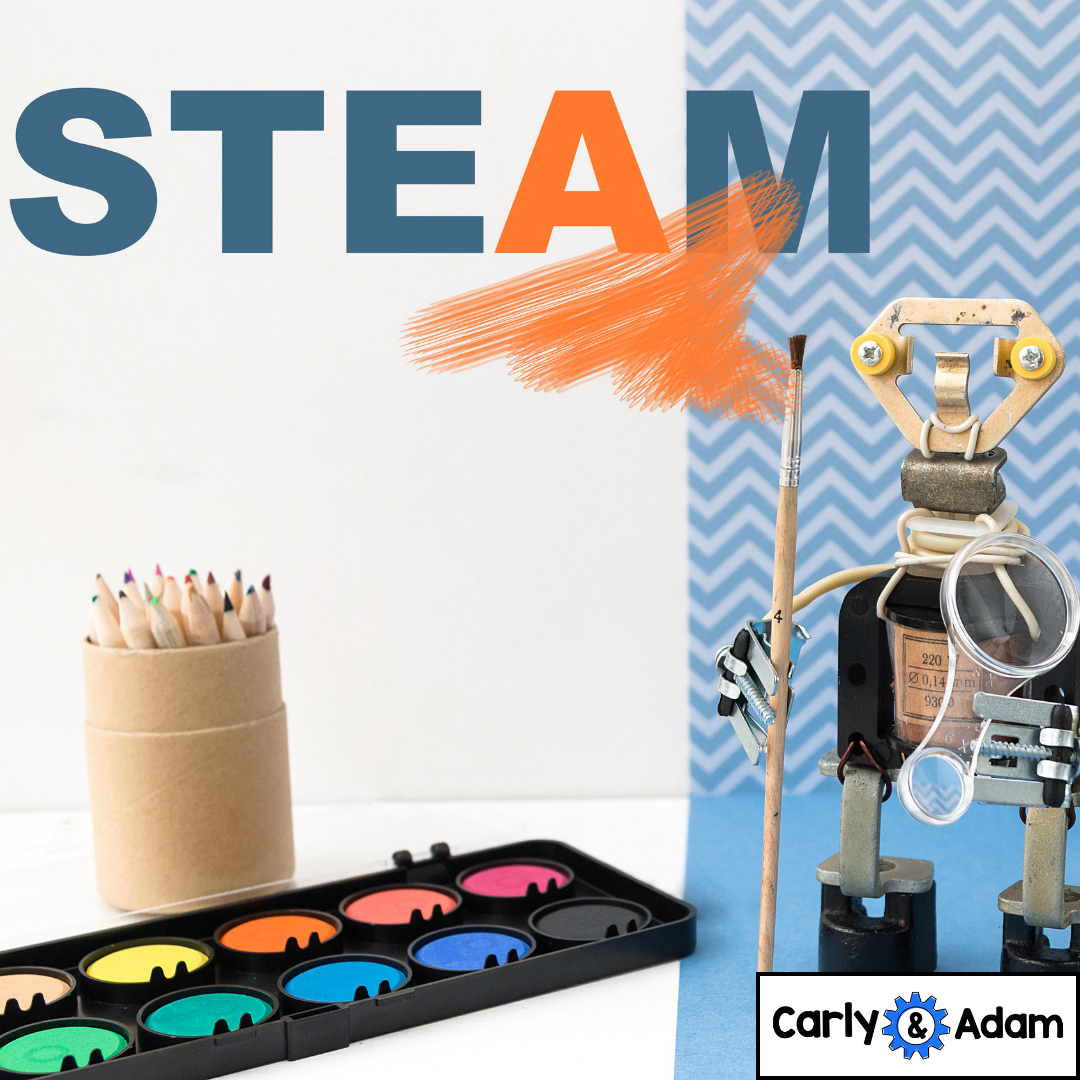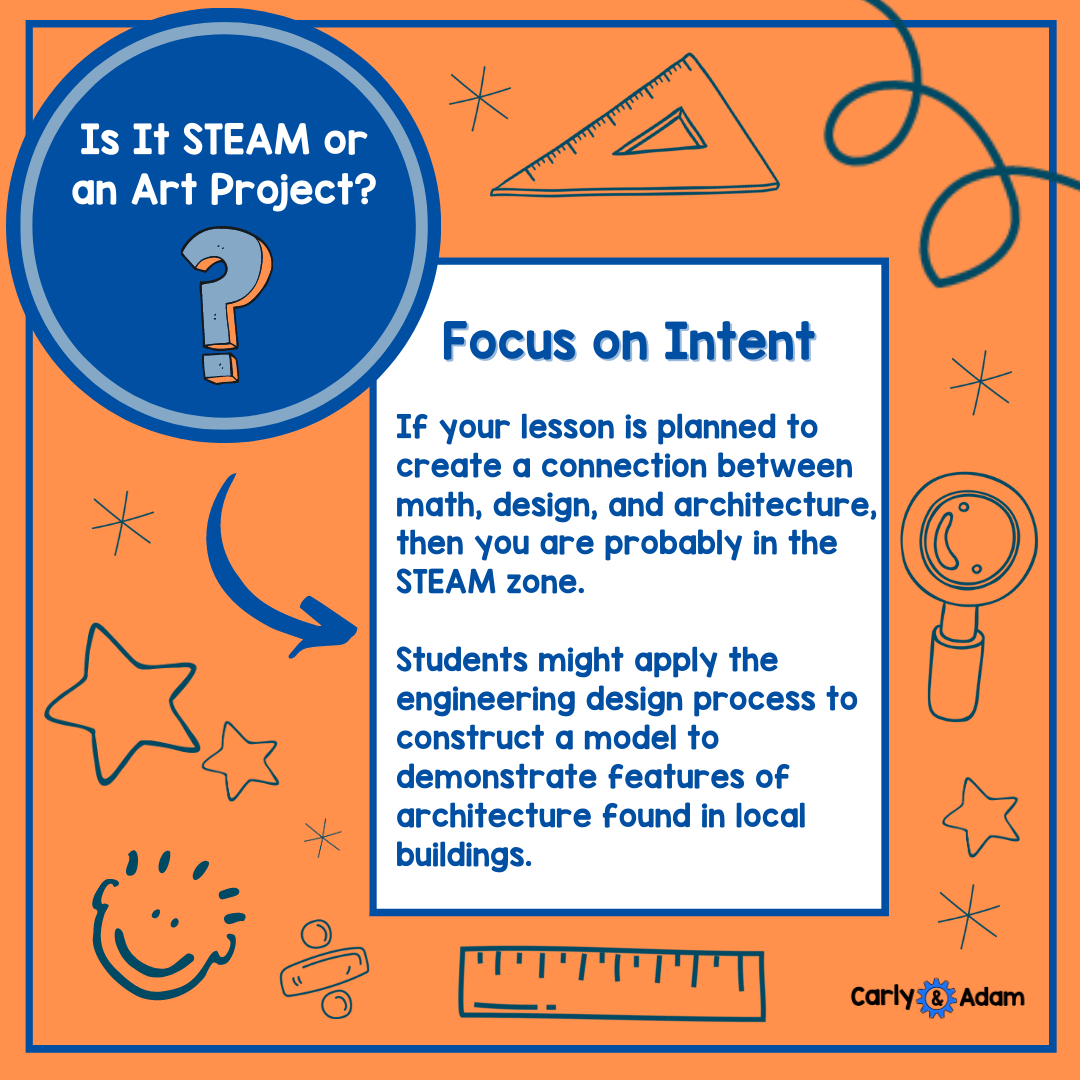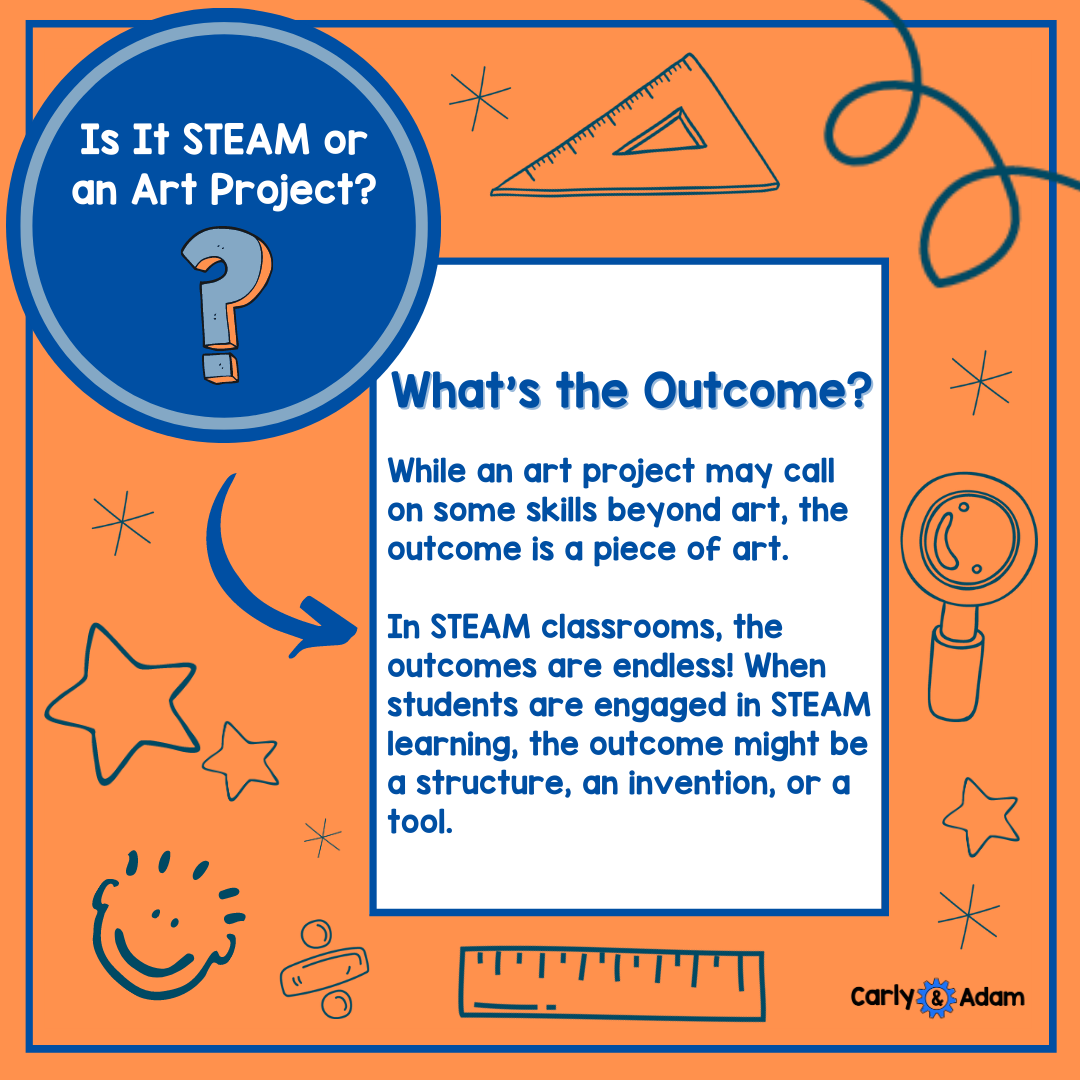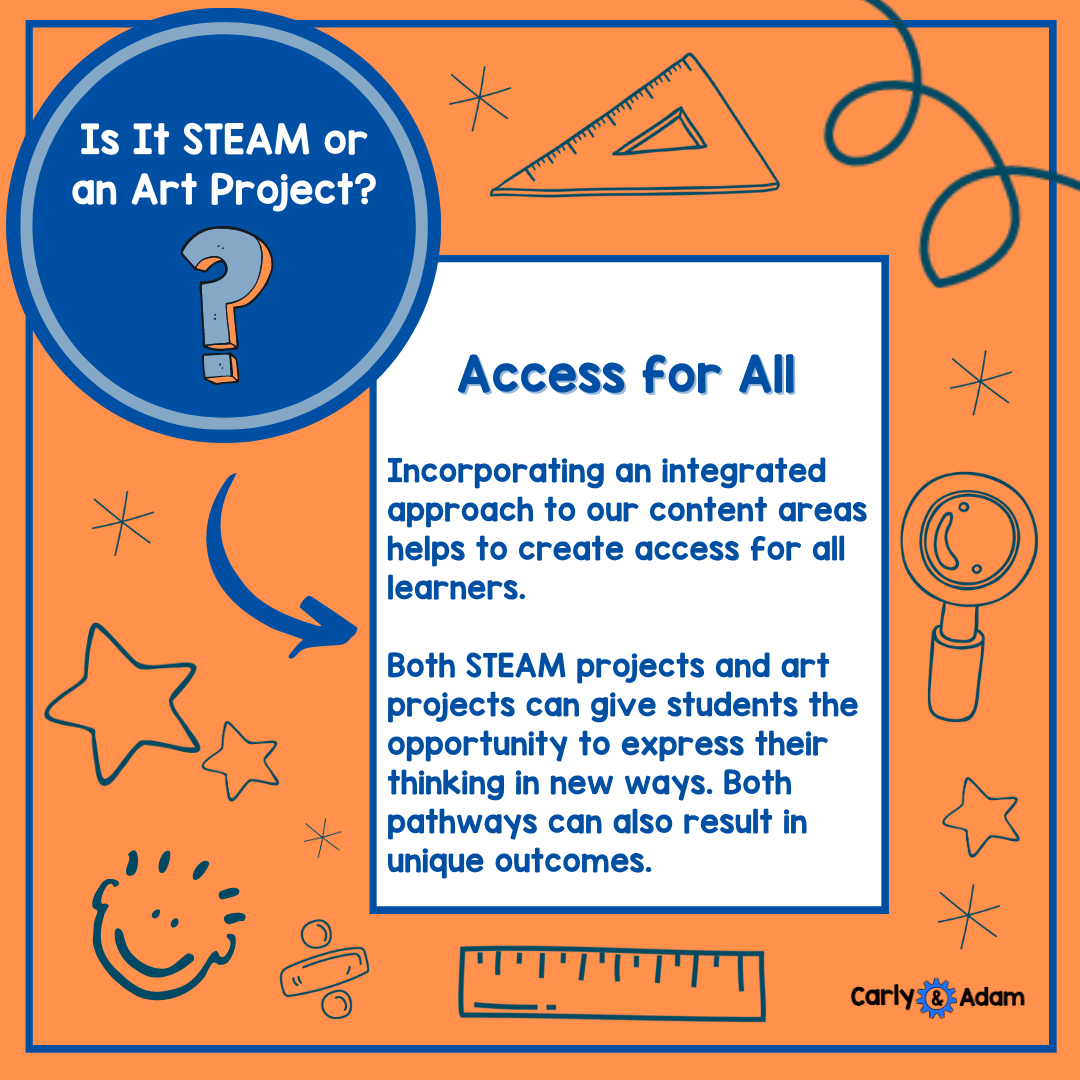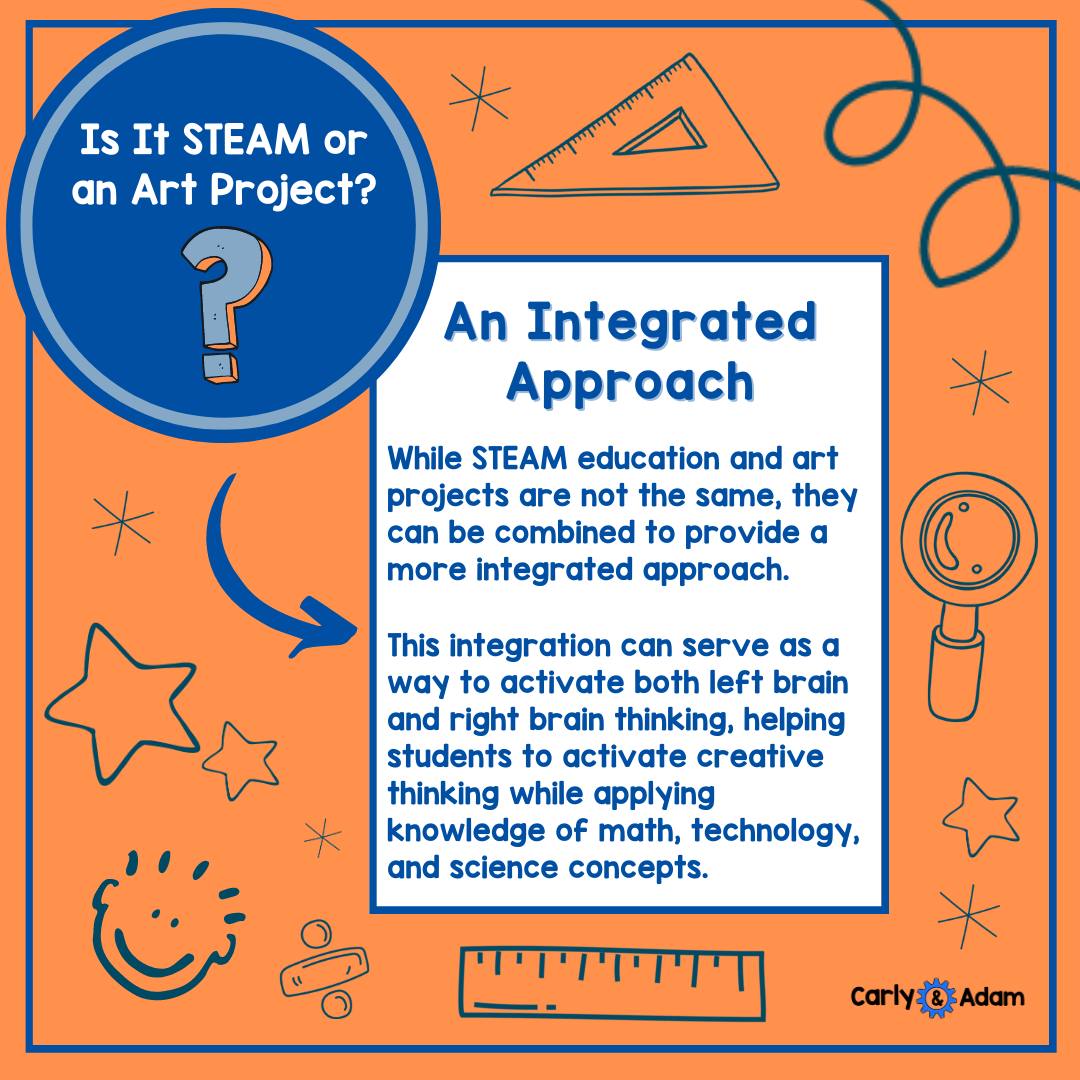Is it STEAM or an Art Project?
The following is a guest post from Dr. Jacie Maslyk.
Bright bold graphic prints, delicate watercolor paintings, intricate yarn weavings.
These are some of the art projects that fill the hallways in our schools. Art is eye-catching and often joyful. STEAM infuses art into its approach, but these two are not the same.
Maybe your school uses the acronym as STEM or STEAM or STREAM.
If artistic expression and creativity are incorporated into the work of your school, then you may favor STEAM over a traditional STEM approach.
Both STEAM and art projects foster student creativity. They provide students with a way to expose them to new ideas and allow them to express themselves. This post will look at the differences between art projects and STEAM education, while also sharing the benefits of both.
Focus on Intent
Perhaps you are unsure about whether your upcoming unit or student project is STEAM or whether it is something else entirely.
Maybe your administration is questioning whether the lesson is rigorous enough. Compartmentalizing your thoughts might help to determine if your lesson is STEAM-focused or arts-based.
Think about your instruction and determine the intention and focus of what you are trying to accomplish.
If your lesson is planned to create a connection between math, design, and architecture, then you are probably in the STEAM zone. Students might apply the engineering design process to construct a model to demonstrate features of architecture found in local buildings.
If your intent is to teach students about specific art concepts like line or shape, then your intent is grounded in art. Perhaps your goal is for students to explore various art mediums and support artistic expression, then you are in the art zone.
Sometimes we create learning experiences for students, but aren’t necessarily sure about their intent.
One way to differentiate the difference between art projects and STEAM education is looking at the standards that the experience is supporting. In STEAM, many standards across multiple subject areas can be combined within one lesson or unit. For art projects, the lesson would focus on standards of art.
What’s the Outcome?
While an art project may call on some skills beyond art, the outcome is a piece of art. It may be a craft or an item that represents various artistic elements, like color or texture.
The art project may support student use of different types of paint, techniques in drawing, or the creative folding of paper. If students are learning about clay, then the outcome will be some sort of sculpture.
In STEAM classrooms, the outcomes are endless! When students are engaged in STEAM learning, the outcome might be a structure, an invention, or a tool. STEAM creations might include a wallet, a composition of music, or a piece of furniture. Students engaged in STEAM might create a model or a prototype, resulting in unique examples and design solutions.
A learning experience in STEAM may incorporate some or all of the components; science, technology, engineering, aspects of the arts, and math.
The combination of these content areas means that students can utilize digital mediums to create posters, programs, or animations. They might also design experiments, construct models, or brainstorm inventions. STEAM opens up the possibility to create just about anything when you use knowledge from all content areas.
Access for All
Incorporating an integrated approach to our content areas helps to create access for all learners.
Whether you are working to incorporate music into your technology class or infuse art into math, an integrated approach to cross-curricular learning is important. Art projects can be an easy entry point into creativity, but incorporating other content areas allows all students to use their personal strengths through STEAM.
Both STEAM projects and arts projects can give students the opportunity to express their thinking in new ways. Both pathways can also result in unique outcomes. The most important thing is that by offering different types of learning experiences (no matter which acronym you give it) it means that all students have access to learning new things, using new materials, and engaging in new experiences.
An Integrated Approach
As you consider the intent of your focus and the outcome that you hope to achieve, STEAM can be an instructional approach that will provide access to all learners.
While STEAM education and art projects are not the same, they can be combined to provide a more integrated approach. As opposed to art standing alone, art can be incorporated into other subjects in a meaningful way. This integration can serve as a way to activate both left brain and right brain thinking, helping students to activate creative thinking while applying knowledge of math, technology, and science concepts.
Have more questions or need additional resources?
You can get all 250+ STEM Challenges by Carly and Adam as part of the STEM Teachers Club Membership. Save $5 on your first month using coupon Code: CarlyAndAdamBlog.
We hope you have found this blog post helpful. To stay connected with Carly and Adam's teaching tips and classroom freebies be sure to follow us on Facebook, Pinterest, Teachers Pay Teachers, and subscribe to our blog!
An educator for the last 23 years, Dr. Jacie Maslyk, has served as a classroom teacher, reading specialist, elementary principal, and assistant superintendent. She is the author of STEAM Makers: Fostering Creativity and Innovation in the Elementary Classroom, Connect to Lead: Power Up Your Learning Network to Move Your School Forward (ISTE), Remaking Literacy: Innovative Instructional Strategies for Maker Learning and Unlock Creativity: Opening a World of Imagination With Your Students. You can read more on her blog, Creativity in the Making, at www.jaciemaslyk.blogspot.com. Connect with Jacie on Twitter @DrJacieMaslyk or email her at jaciemaslyk@gmail.com .

